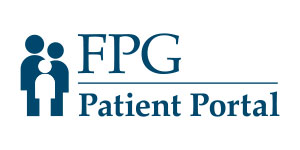Hurricane season is here, bringing with it the vague disquiet that you’re just not doing enough to prepare. And while we can’t exactly change the weather, we can offer just a few tips on how to stay prepared for the worst and evacuate safely.
Register for a Special Medical Assistance Shelter NOW
Most hurricane shelters only provide basic first aid. If you or a loved one will require more medical assistance than that, then it is vital to pre-register for assistance from the Sarasota County Medical Needs Program before a hurricane arrives. You can do so by calling Sarasota County’s Call Center at 941-861-5000 or by filling out the county’s Medical Needs Application form online. Once registered as a Medically Dependent Person (MDP), you will be on the county’s registry for transportation and shelter at a medically dependent evacuation center.
Though well-equipped with vital supplies, medical care at these shelters will still be limited, so it is crucial that caregivers accompany. Medical alert bracelets that include the person’s name and medical conditions are also strongly recommended.
For more information on Sarasota County’s Medical Needs Program, click here.
NOTE: Sarasota County stops accepting online applications 60 hours prior to a storm’s arrival, so be proactive.
Sarasota Memorial campuses are not community hurricane shelters. Community members with qualifying medical needs who may need to evacuate their home during a hurricane are encouraged to register in advance as a medically dependent person (MDP) with Sarasota County’s Medical Needs Program; click here.
Sarasota County establishes MDP shelter locations and arranges transportation and shelter assignments for registered MDPs. If local evacuations are necessary, Sarasota County may assign certain pre-registered MDPs who require a hospital setting to Sarasota Memorial, based on available capacity. Sarasota County will have other shelter locations for MDPs who do not require a hospital setting.
Stock Up On Needed Medications
In the case of an imminent emergency, always have a supply of your needed medical items.
For prescription medications, it’s best to have at least a two-week supply. Also include a list of the dosage, the prescribing physician and the prescribing physician’s phone number. Other medical items you may need are catheters, walkers, wheelchairs, special dietary food and oxygen. If you have an electric wheelchair, it’s great to have an extra battery—but it’s even better if you have a manual wheelchair, just in case. And if you have registered as an MDP, be sure that you have enough oxygen to get to and from the shelter, and a spare cylinder on top of that.
Office Closures
In an emergency, First Physicians Group offices will close for the duration of a storm. For up-to-date information about office closures after a storm, please go to the First Physicians Group website, or call your provider’s office.
Make A First Aid Kit
In the event of an emergency, being able to take care of minor injuries—and keep them from turning into major problems—is essential.
For a good guide to putting together a home first aid kit, click here.
Make A Home Survival Kit
Whether you’re sheltering at home or coming home after a storm, these are items you’re likely to need around the house, and it’s not going to be convenient—and might not even be possible—to go pick them up at the store.
A good foundation for your home survival kit could be:
- a large tarp or tarps, to patch roof damage or cover debris
- fire extinguisher
- cleaning supplies, especially a disinfectant like bleach
- large, quality, trash bags, that you can use to store necessities and valuables before the storm, and to then pack up debris after
Make A Travel Survival Kit
If you’re heading to a shelter, you’re going to have to pack light and pack smart. Here’s a good foundation for any travel survival kit:
- Water
- Non-perishable foods (don’t forget the can opener)
- Pillow and blankets
- Personal hygiene items (including extra toilet paper)
- Disinfectant
- Insect repellant
- Sunscreen
- Flashlights and batteries
- Spare keys
When it comes to clothing, remember that it’s likely going to be hot and humid and alternately sunny/stormy after the hurricane passes. So wear light, comfortable clothing, and be sure to include a hat for the sun, raingear for the rain, and extra shoes, just in case.
And don’t skimp on the underwear.
Protect Your Papers
Seal all of your important documents in a Ziploc baggie, watertight, so it’s quick and easy to pick up and take along with you. Inside, you’re going to want to have identification such as passport, driver’s license, birth certificate, and social security card, but also insurance cards, medication list, certain bank documents, and contact list.
Add Your Personal Survival Kit
You may want to get a waterproof container and put a few personally necessary items in there ahead of time, so you’re not scrambling at the last minute. An extra pair of glasses, hearing aid and batteries, that sort of thing.
Make A Contact List
Once upon a time, you had to remember everybody’s phone number. Thanks to cell phones, however, many have lost the habit. But you can’t always rely on having a charged cell phone throughout a prolonged emergency. So you want to have a printout, an actual list of people’s names and phone numbers, that you can take with you.
But while we’re on the topic, a solar phone charger is not a bad investment.
Establish A Personal Support Network
After a storm passes, we always hear on the news about how the neighbors have gotten to know each other through the event. Go ahead and get to know your neighbors ahead of time. You don’t have to invite them to family dinner, but know who’s evacuating and who’s staying, know who needs help and who’s available to help you, should you need to evacuate.
Even More Hurricane Prep


